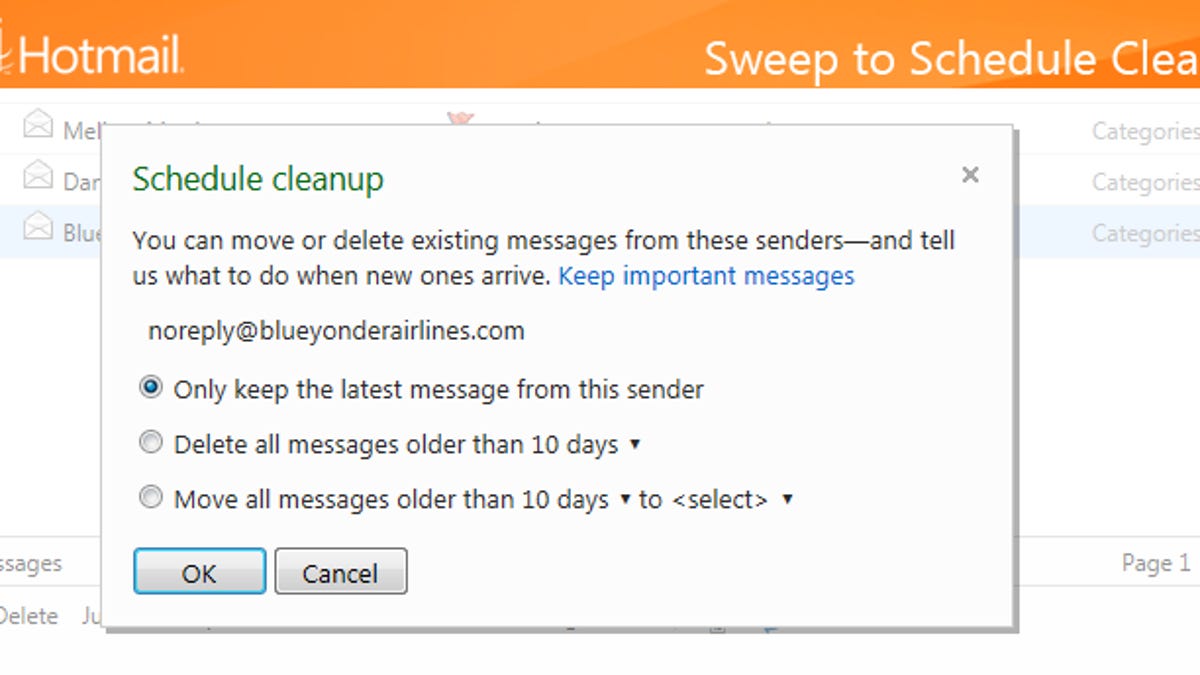Microsoft aiming to clean up Hotmail user's inboxes
At an event in San Francisco , the software giant admits that many people have poor perceptions of the world's largest Web mail service but that it is tackling those perceptions with a broad set of new features that could help easily manage their e-mail flow.

SAN FRANCISCO--Microsoft is aiming to make its Hotmail e-mail service better than ever--and confronting what it admits is a subpar perception of the brand--with a series of new features designed to help users easily clean up their inboxes.
At an event here Monday afternoon, Windows Live corporate vice president Chris Jones explained that Microsoft has long been aware that the Hotmail brand was damaged by a series of issues that affected users' experiences, including storage, spam, performance, and an inability to work properly on most mobile devices.
But those issues peaked in 2006, Jones argued, and since then, Microsoft has been proactively addressing them, attempting to ensure that it gives users a broad set of new tools to help them improve performance, minimize spam, boost storage, and streamline organization.
Today, Jones said, Hotmail is the world's largest Web mail service, with approximately 350 million users, trailed by Yahoo Mail (310 million users) and Gmail (260 million users), respectively, according to Comscore numbers provided by Microsoft. But in the U.S., Yahoo is No. 1, with 96.6 million active users, followed by Gmail with 62.7 million users. Hotmail is third here with 45.5 million users.
Jones argued that during the last few years, since that 2006 trough of public perception of Hotmail, Microsoft has worked hard to improve the service. But now, he said, the challenges that Hotmail--and all e-mail clients, for that matter--faces are led by a never-ending flood of spam, newsletters, and other impersonal messages that clog users' inboxes. "When half your inbox is newsletters," Jones said, "you need different tools for managing it. Otherwise, you will lose control of the inbox."
At the event, Jones and Hotmail group program manager Dick Craddock, unveiled a set of new features that will be rolled out across the service in the next couple of weeks. They also said that Microsoft today launched an official Hotmail app for Android devices.
New features
Hotmail users will soon have access to five new major feature sets that Microsoft hopes will help them have a better e-mail experience.
Today, Jones said, fully 50 percent of users' Hotmail inboxes are filled with newsletters and deal offers. So-called social updates from services like Facebook and Twitter make up 17 percent of messages, while group and other notifications make up 9 percent. Shopping notices account for 6 percent, while "true spam" and other miscellaneous messages come in at 2 percent each. Only 14 percent of messages are actually "person-to-person."
But that 50 percent figure for newsletters and deal offers is what really stands out. And that's why the new Hotmail feature leading the way is a brand-new system for filtering newsletters. The feature is part of the "Sweep" set of Hotmail tools that has been in place for some time. But in a couple of weeks, users will be able to set up a newsletter categorization that will automatically place all such e-mails in a folder, or delete them altogether, as they arrive. In addition, they'll be able to choose to have Hotmail automatically unsubscribe them from newsletters and bar any further such messages from senders from whose newsletters they've unsubscribed.
Another big new feature is scheduled inbox cleanup. The idea here is to allow users to feel confident that they don't have to constantly be flooded with new messages from frequent message senders. This feature allows users to automatically keep only the latest message from a specific sender. They can choose to have additional messages moved to a folder or to delete older messages after three, 10, 30, or 60 days.
One longstanding e-mail feature that Microsoft feels has never worked right is flags. With that in mind, the new Hotmail feature set will include a modern flagging system, Craddock explained. With this, flagged messages will automatically be moved to the very top of the inbox. This, of course, will mean that users have to be careful about which messages they flag, lest the entire first screen of their inboxes become a static list of flagged messages.
Users will also have a new set of what Hotmail terms "instant actions" at their fingertips. These are buttons that appear when a user hovers over a message. The service will offer up three standard choices: delete, flag, or Sweep. But users will also be able to define up to five customizable actions that can be available when hovering over a message.
Lastly, Hotmail will soon allow users to set up new customizable categories and have all messages that fit them be automatically swept into appropriate folders.
Taking on the competition
For Microsoft, having the world's largest active Web mail user base is a big advantage and a big responsibility. The company could have been forgiven for abandoning Hotmail at its nadir, but instead, it doubled down on the service. And now, it is hoping that the set of new features will help it both boost its public perception and give users, both existing, and new, reasons to make Hotmail their primary e-mail account.
But a poor public perception is extremely difficult to overcome, and Hotmail has a steep hill to climb if it hopes to be seen as an important player in the Web mail space, at least in the U.S. Whether these new features are enough to overcome existing competitors like Gmail and Yahoo Mail, not to mention potential new challengers like Apple and Facebook, remains to be seen.

